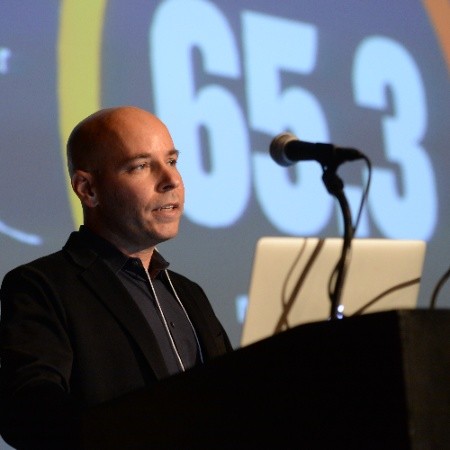Here’s the perfect collaboration – on one hand, a company with an ambitious goal to replenish 100 percent of the water used in its beverages and their production by 2020. On the other hand, a brilliant inventor who built a machine that can purify up to 300,000 liters of water each year and is looking for a partner to help with production, distribution and lowering costs.
Welcome to the world of dreams that might become true. This time, we’re talking about the Slingshot machine, which was invented by Dean Kamen, aka the Segway inventor. Last September, Kamen partnered with Coca-Cola to bring the Slingshot technology to communities in regions where potable water access is limited, providing them with safe drinking water.
This collaboration seems such a good fit, it's a wonder that both sides didn’t do it earlier. But, then again, can the combination of Coca-Cola and Dean Kamen succeed where so many others have failed? If so, this partnership could help 780 million people who lack access to safe drinking water by adding more than half a billion liters of clean drinking water per year to the global water supply.
According to Coca-Cola, the Slingshot machine uses a vapor compression distillation system that runs on low levels of electricity. “The system boils and evaporates any dirty water source - river water, ocean water and even raw sewage - and then allows the pure water to condense and be collected,” the announcement explained. For those who might still not be sure how well the Slingshot copes with really dirty water, Kamen once gave a personal demonstration, drinking his own urine after it went through the system. Say what you want, the man walks the talk.
One Slingshot unit can purify up to 300,000 liters of water each year, or 10 gallons of clean water an hour while consuming less than 1 kilowatt of electricity. It can be plugged into the local grid or can be powered by other locally available and renewable power sources such as solar cells, batteries, or biogas. Sounds like a winning product, right?
Well, there’s only one small problem. Every Slingshot machine costs a lot of money. Kamen told CNN in 2009, that Slingshot costs his company (DEKA R&D) several hundred thousand dollars to build. His goal, he said, was to get the price down to about $1,000-$2,000 per machine. This is where Coca-Cola comes into the picture.
The Slingshot machine wasn’t created yesterday, or last year. Kamen has been developing this technology for more than a decade and showed it off on 60 Minutes in 2003, and on The Colbert Report in 2008. While Kamen continued to develop the system and even tested it in Honduras, he couldn’t get over the cost obstacle.
Kamen knew full well that cost is the part of the equation that can make the difference between a successful invention that will change the lives of millions of people, and an invention that can be utilized only on a limited scale. He was looking for the right partner that will help him overcome this hurdle. After years of unfruitful searches, Kamen hopes Coca-Cola can help the Slingshot become the former rather than the latter.
“For years, we looked for a partner who could help us get the Slingshot machine into production, scale it up, bring down the cost curve, and deliver and operate the units in the places where the need is greatest. Now we have that partner in Coca-Cola who brings unparalleled knowledge of working, operating and partnering in the most remote places in the world," Kamen said.
Coca-Cola, for its part, is up to the challenge, seeing the potential in this innovative system. “By partnering with DEKA R&D to bring the Slingshot technology to water-stressed communities in remote places, we hope to be able to deliver and maintain a clean water solution for many remote communities, changing the daily lives of thousands of people," said Muhtar Kent, Chairman and CEO of the Coca-Cola Company.
Yet, with all the excitement about the collaboration and the uplifting vision of its potential to become a game changer, it’s important to note that this is a serious challenge, even for Coca-Cola. After all, we’re talking about finding a way to cut the price of the system in more than 90 percent.
Can Coca-Cola do it? It’s a good question. On one hand, the company has the capabilities, as well as a strong incentive – if it succeeds, it will be much easier to meet its ambitious goal of replenishing 100 percent of the water it uses by 2020. On the other hand, I wouldn't be surprised to see Coca-Cola following in the steps of Unilever, Heineken and other companies by creating a crowdsourcing platform to seek the public’s help.
I have no doubt that Coca-Cola is probably the best partner Kamen could have asked for. Now, it remains to be seen if the company can use its magic touch to make the Slingshot an affordable and not just a great water solution.
[Image credit: The Coca Cola Company]
Raz Godelnik is the co-founder of Eco-Libris and an adjunct faculty at the University of Delaware’s Business School, CUNY SPS and the New School, teaching courses in green business, sustainable design and new product development. You can follow Raz on Twitter.

Raz Godelnik is an Assistant Professor and the Co-Director of the MS in Strategic Design & Management program at Parsons School of Design in New York. Currently, his research projects focus on the impact of the sharing economy on traditional business, the sharing economy and cities’ resilience, the future of design thinking, and the integration of sustainability into Millennials’ lifestyles. Raz is the co-founder of two green startups – Hemper Jeans and Eco-Libris and holds an MBA from Tel Aviv University.














